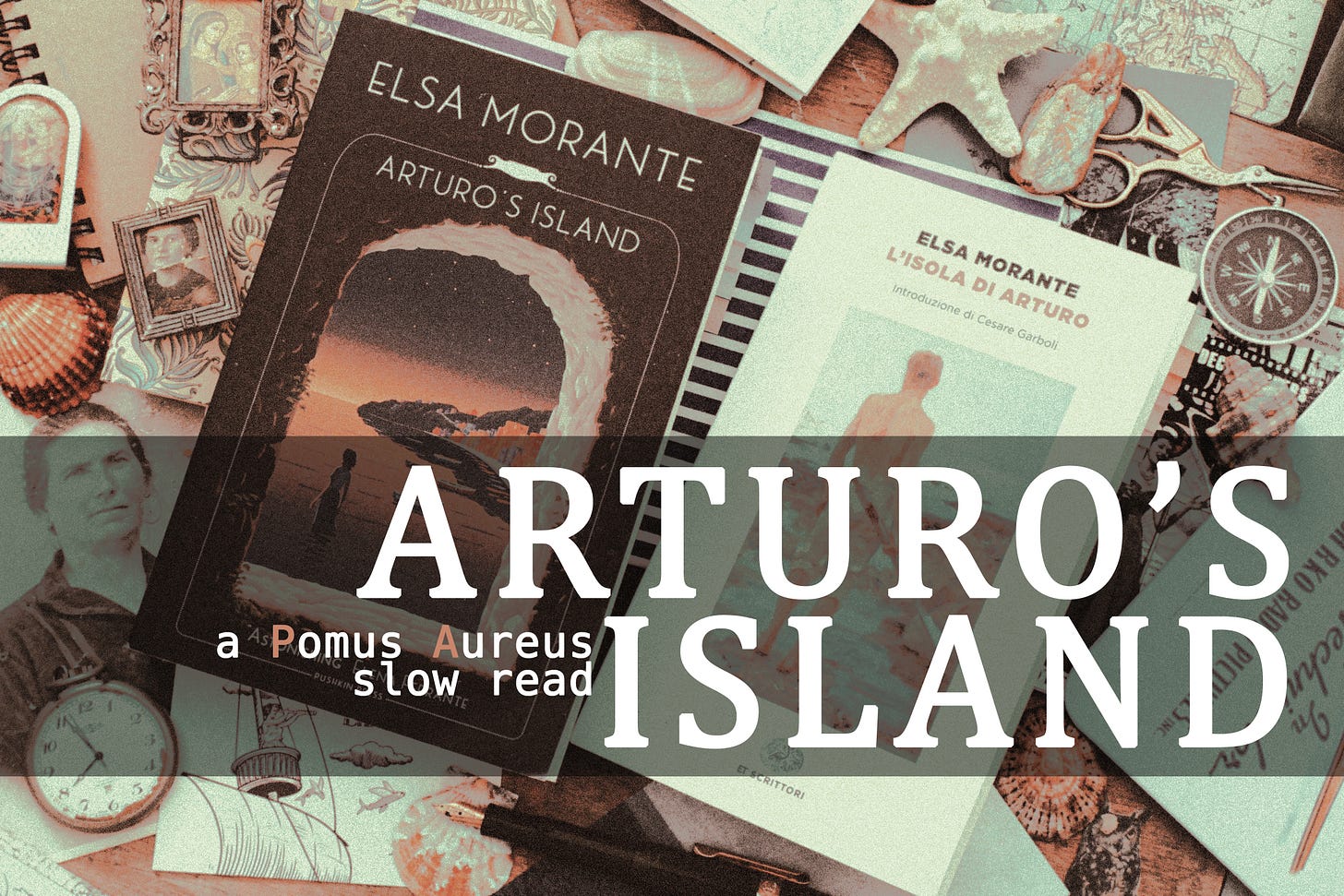Arturo's Island: a brief introduction
In which we dip our toes in the waters of a fairy tale island.
Welcome or welcome back to Pomus Aureus! Friends, I’m so nervous, honored and excited to introduce you to our summer book and very first female author, the incomparable Elsa Morante. Let’s start with a little teaser to pique your curiosity, shall we?
The story
Late 1930s. Mussolini’s dictatorship is growing frantic and World War II approaches, but Arturo, our young protagonist, has no notion of the great tragedies happening on the continent. He grows wild and free on the idyllic Procida, a dolphin-shaped, postcard-perfect island in the Gulf of Naples; his mother died in childbirth, his dearest father is never home, nobody tells him to wash his face or go to school; his home, a crumbling old palace, is full of secrets and books about knights and heroes; he has his own little boat and a faithful dog to go on adventures with. Surely he’s the happiest, luckiest boy in the world.
Arturo’s savage childhood is put in jeopardy when a stranger appears in his home, a stepmother, of all the insults!
He’s fourteen, she’s sixteen, and it’s a tale as old as time. Tragic like Greek theater, trivial like a child sobbing in the dark.
Behind the scenes
Elsa Morante's critics would routinely accuse her of writing pulpy, girlish melodrama far removed from the political issues of the time. An expert in folklore and the language of storytelling (she’d started her career writing children's fairy tales), Morante didn't need soapboxes to deliver her message.
Throughout Arturo’s Island she hides behind the voice of an teenage boy, never slipping up, filtering the world through his eyes and trusting the reader to puzzle out what has been left untold. Handing over the stage to her unreliable narrator is a trick, and she wants us to see her sleight of hand; she retells the hero's journey as countless Homers around countless fires did before her, she picks and chooses archetypes to spoil the story before starting it. And a boy who grew up inhaling myths is the perfect narrator for a homebrewed little Odyssey: to Arturo every object is a magic amulet, every person is a a god or a villain, every coincidence is destiny.
At the same time, and with disarming ease, we are never allowed to forget that the world stage is a tiny island, and Arturo’s glorious exploits are ferociously rooted in reality. The portrayal of women is (along with Arturo’s father’s) the most impressive use of this narrative paradox: objects of burning romanticism and time immemorial violence, plain and divine, the women of Procida are mysterious, voiceless beasts bowing to the whims of men. Morante imitates the casual misogyny of many a classic writer to accomplish the opposite effect: what was once dismissive becomes an accusation hidden in plain sight.
And yet she never spoils for a fight, she’s never controversial for the sake of it; just like Arturo she is at her core a romantic, much to her critics’ annoyance. She pushes her archetypal gods down their pedestals not to kill them, but to love them better. A long-time student of the human psyche, Morante uses all her tricks to dig and dig and inevitably finds that people, just like children, are monstrous and innocent, capable of immeasurable beauty even at their worst, victims of the narrative even when they’re the perpetrators. Her characters are imperfect and tender, bittersweet and pathetically real, begging and begging to be loved.
Let’s get reading!
Arturo’s Island was first published in Italian in 1957. A translation by Isabel Quingly was published in 1959 by Alfred A. Knopf, with new editions of the same translation released in 1988 by Carcanet Press and in 1998 by Zoland Books.
For this read-through I will be using the most recent translation by Ann Goldstein, distributed by Pushkin Press in the UK and Liveright in the US, and also readily available in eBook format. You can choose whichever edition, language and translation is easier for you to find. If you’d like to join and can’t find a copy, please let me know and I’ll locate one for you.
We start on June 27th: here is the complete reading schedule.
And with this, too-da-loo, and see you very soon!






Might not keep to the schedule but I am ordering a copy of the book! Yay!